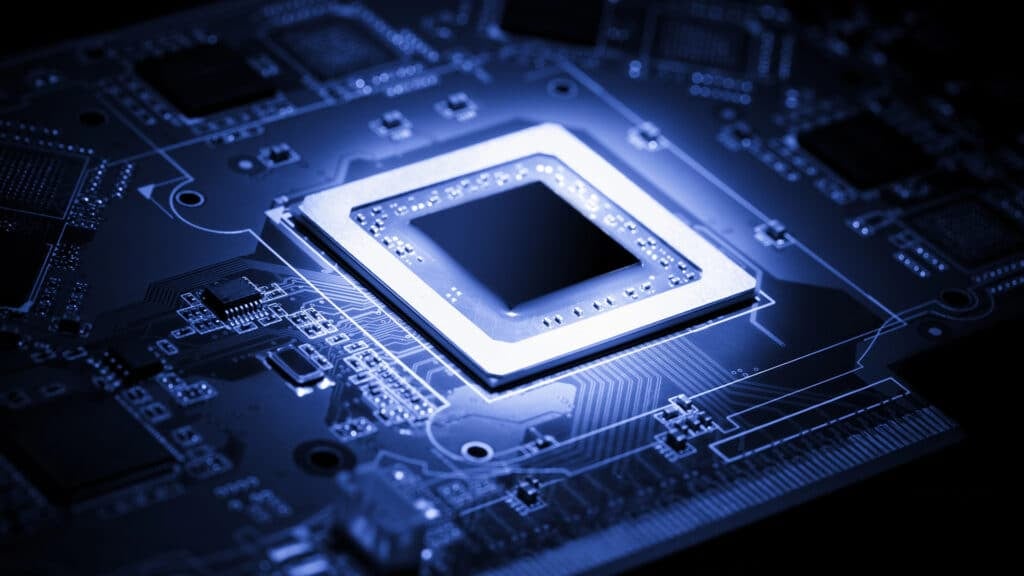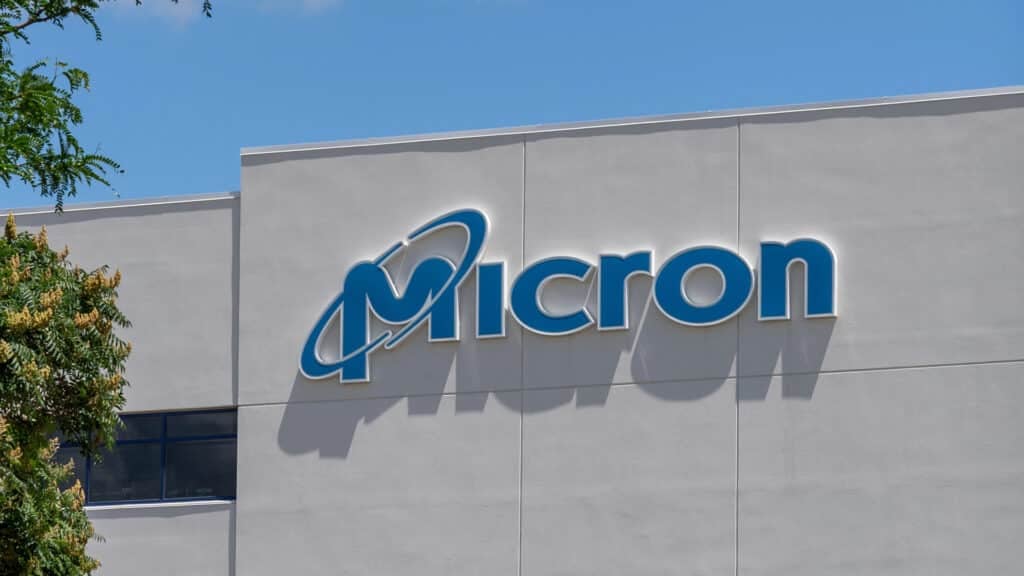Episode 237, this episode aired on October 21, 2024
Analyst(s): Daniel Newman, Patrick Moorhead
In The Six Five Webcast Episode 234, Patrick Moorhead and Daniel Newman discuss significant developments in the tech industry, from Google’s antitrust complaint against Microsoft to HP’s AI-focused innovations. The episode also covers Micron’s AI-driven growth, Intel’s Lunar Lake benchmarks, and NetApp’s data infrastructure advancements.
What Are Covered in This Episode:
- Google’s antitrust complaint against Microsoft over Azure cloud practices
- HP Imagine 2024: AI-powered commercial products and GPU-sharing innovation
- Micron’s AI accelerator and memory growth, fueled by demand for HBM3
- Key insights from the Global Semiconductor Alliance Executive Forum on AI and semiconductors
- NetApp’s pivot toward Intelligent Data Infrastructure and agile data updates
- Intel’s Lunar Lake benchmarks: AI performance and battery life improvements
Access the video link of the October 21, 2024, Six Five episode here.
The Historic AMD and Intel Collaboration
AMD and Intel, two companies known for their fierce rivalry, have collaborated for the first time in nearly 50 years. This unprecedented collaboration is not just symbolic; it marks a significant shift in how these companies address common challenges facing mounting competition from ARM-based architectures.
Historically, AMD and Intel have been at odds. Their rivalry goes back decades, with each company pursuing its chip design, manufacturing, and market strategy path. The friction between the two was emblematic of the broader competitive landscape in the semiconductor industry, where innovation often comes at the expense of direct competitors. But now, the landscape is changing. ARM-based processors—like those used in Apple’s M1 chips and Qualcomm’s Snapdragon—are gaining traction in areas traditionally dominated by x86 architecture, particularly personal computers and servers.
AMD and Intel’s collaboration aims to simplify software development for ISVs (Independent Software Vendors) by standardizing some aspects of their instruction set architectures (ISAs). The critical problem they’re tackling is fragmentation: developers have to write different code to optimize for Intel’s chips versus AMD’s, which slows development and increases complexity. By aligning on specific security and performance extensions, AMD and Intel are making it easier for developers to write software that works seamlessly across both platforms.
ARM’s increasing presence in servers and PCs—especially with companies like Amazon, Microsoft, and Google designing their ARM-based chips—threatens the dominance of x86 architecture. The collaboration could be seen as a move to protect their market share from being eroded by these newcomers. In this context, AMD and Intel’s cooperation is a strategic effort to fend off competition and preserve their leadership in high-performance computing and server markets.
However, questions remain about how this collaboration will evolve. While AMD and Intel are giants in servers and PCs, ARM has a significant foothold in mobile devices and automotive applications. A more unified x86 architecture could open new avenues for AMD and Intel to expand into these markets. Still, the collaboration is focused on easing the burden for developers and maintaining their stronghold in the high-performance computing sector.
Lenovo’s AI Ambitions at Tech World 2024
Lenovo’s Tech World 2024 event marked one of the most sophisticated presentations Lenovo has ever given, highlighting its hardware innovations and growing software capabilities. Lenovo has long been a leader in personal computing, but at Tech World 2024, the company showcased its commitment to AI-driven solutions across various industries.
Lenovo’s business is divided into three main segments: IDG (Intelligent Devices Group), ISG (Infrastructure Solutions Group), and SSG (Solutions and Services Group). While its device group (which includes PCs, laptops, and smartphones) remains the largest part of its business, Lenovo’s focus is increasingly shifting toward infrastructure and solutions—both critical for AI implementation.
One of the key announcements at the event was Lenovo’s new AI library, which integrates with NVIDIA’s NIM blueprints. This library provides AI-driven solutions for enterprise customers, including legal review tools and marketing assistants. For instance, the AI legal assistant promises a 45% increase in accuracy and an 80% improvement in data reuse. These numbers, while impressive, highlight Lenovo’s intention to move beyond hardware and establish itself as a player in the enterprise SaaS market.
On the consumer side, Lenovo introduced Lenovo AI Now, an AI-driven tool designed for education and metasearch. The platform allows users to integrate classroom presentations, notes, and other materials into a searchable AI-driven system that can generate prompts and insights based on the content.
Lenovo’s commitment to choice—offering a range of AI platforms powered by silicon providers like Intel, AMD, and Qualcomm—gives the company a competitive edge. Nevertheless, Lenovo still faces challenges in the enterprise infrastructure space, particularly when building relationships with CIOs and convincing them to choose Lenovo over competitors like Dell, HPE, and IBM.
Nuclear Power: The Future of Data Centers?
With AI workloads skyrocketing and data centers consuming more energy than ever, the tech industry faces a sustainability crisis. Data centers currently account for 1-2% of global power consumption, which could rise to 3-4% by the decade’s end.
Traditional renewable energy sources like solar and wind are struggling to keep up with the power demands of AI and high-performance computing. Microsoft and Google have recently announced significant investments in Small Modular Reactors (SMRs), which promise to provide data centers with a more scalable and stable energy source. This marks a substantial shift in how the tech industry approaches sustainability, as nuclear power was once considered taboo due to environmental concerns.
The environmental narrative around nuclear energy is changing; with AI training runs consuming massive amounts of power and traditional energy sources facing limitations, nuclear energy offers a viable alternative for keeping data centers running efficiently. The investments by tech giants like Microsoft and Google indicate that nuclear power could play a crucial role in the future of AI infrastructure.
SMRs, in particular, offer an optimistic solution because they can be deployed more quickly and at a lower cost than traditional nuclear reactors. These smaller reactors are also more flexible, making them well-suited for powering data centers requiring a constant and reliable energy supply. While nuclear power is not without its challenges—both in terms of public perception and regulatory hurdles—it represents a critical part of the solution to the tech industry’s growing energy needs.
TSMC Earnings: A Bellwether for the Semiconductor Industry
TSMC, the world’s largest contract chip manufacturer, reported record revenues driven by strong demand for AI chips and high-performance computing. The company’s 5 and 3-nanometer nodes now account for over 50% of its revenue, highlighting the rapid adoption of cutting-edge semiconductor technology.
One of the most striking aspects of TSMC’s earnings report was the dominance of AI in its revenue mix. The company’s high-performance computing segment, which includes AI chips, now makes up 51% of its total revenue. This shift emphasizes the growing importance of AI in the semiconductor industry, as companies like NVIDIA, AMD, and Intel rely on TSMC to manufacture the advanced chips that power their AI solutions.
However, while AI continues to drive growth, other sectors, such as automotive and IoT, have remained flat. This suggests that while AI is booming, different parts of the semiconductor market face headwinds. Nonetheless, TSMC’s ability to command higher prices for its cutting-edge nodes has helped the company maintain strong margins and continue investing in developing next-generation semiconductor technology.
Looking Forward
From AMD and Intel’s historic collaboration to Lenovo’s AI ambitions and the potential of nuclear power to fuel future data centers, the episode highlighted the complex, interconnected challenges and opportunities facing today’s tech giants. As AI continues to reshape the landscape, companies across the tech ecosystem are finding new ways to innovate, collaborate, and address the pressing issues of sustainability and energy consumption.
To view the full webcast or to read the full transcript, please click on this link. Be sure to subscribe to The Six Five Webcast so you never miss an episode.
Disclosure: The Futurum Group is a research and advisory firm that engages or has engaged in research, analysis, and advisory services with many technology companies, including those mentioned in this article. The author does not hold any equity positions with any company mentioned in this article.
Analysis and opinions expressed herein are specific to the analyst individually and data and other information that might have been provided for validation, not those of The Futurum Group as a whole.
Other insights from The Futurum Group:
AI in Context: UXL to Be an Open-Source Alternative to NVIDIA’s CUDA?
New AI-Powered Innovations for Copilot+ PCs and Windows 11
AI, Antitrust, and Chip Wars – A Recap from The Six Five Webcast
Author Information
Daniel is the CEO of The Futurum Group. Living his life at the intersection of people and technology, Daniel works with the world’s largest technology brands exploring Digital Transformation and how it is influencing the enterprise.
From the leading edge of AI to global technology policy, Daniel makes the connections between business, people and tech that are required for companies to benefit most from their technology investments. Daniel is a top 5 globally ranked industry analyst and his ideas are regularly cited or shared in television appearances by CNBC, Bloomberg, Wall Street Journal and hundreds of other sites around the world.
A 7x Best-Selling Author including his most recent book “Human/Machine.” Daniel is also a Forbes and MarketWatch (Dow Jones) contributor.
An MBA and Former Graduate Adjunct Faculty, Daniel is an Austin Texas transplant after 40 years in Chicago. His speaking takes him around the world each year as he shares his vision of the role technology will play in our future.
Six Five Media is a joint venture of two top-ranked analyst firms, The Futurum Group and Moor Insights & Strategy. Six Five provides high-quality, insightful, and credible analyses of the tech landscape in video format. Our team of analysts sit with the world’s most respected leaders and professionals to discuss all things technology with a focus on digital transformation and innovation.






